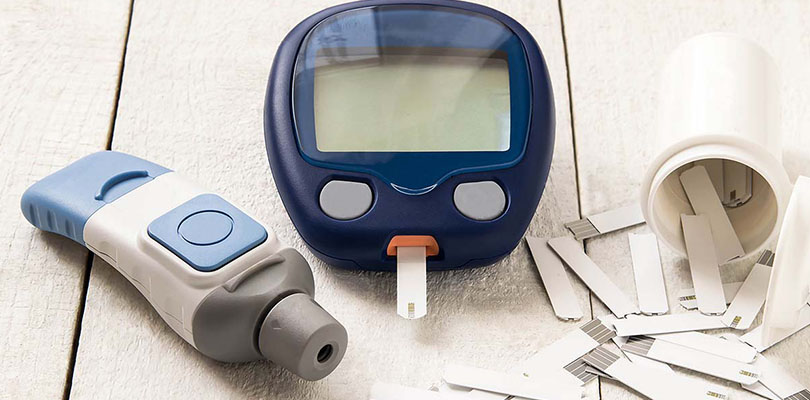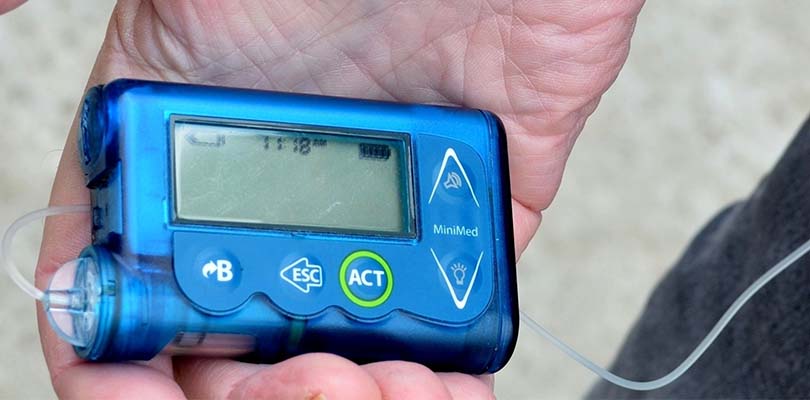Is a Diabetes Watch an Option for You?
If you are searching for a new way to monitor your blood glucose, a diabetes watch could be the solution. Here’s how this new technology is bringing diabetic healthcare into the future.
What Is Diabetes?
Diabetes is a common endocrine disorder. The most common forms are type 1 and type 2 diabetes, and both involve problems with the hormone insulin. In type 1 diabetes, the immune system attacks the insulin-producing cells in the pancreas, preventing them from secreting the hormone.
In type 2 diabetes, the pancreas still produces insulin, but the body’s cells cannot use it effectively. The pancreas tries to produce extra insulin to compensate. However, over time, this additional strain can cause insulin production to stop altogether.
Insulin is responsible for allowing cells to take in glucose molecules from food to make energy. Therefore, both type 1 and type 2 diabetics can have difficulty regulating their blood sugar.
Diabetics’ blood sugar can easily become too high; this is a condition known as hyperglycemia. It is a dangerous situation as high blood sugar can cause a variety of symptoms and long-term complications.
What Are the Symptoms of Diabetes?
Although the causes of type 1 and type 2 diabetes are different, the symptoms are fairly similar. They include:
- Persistent thirst
- Urinating more often than usual
- Fatigue
- Weight loss
- Itching skin and genitals
- Increased risk of yeast infections
- Slow wound healing
- Blurred vision
- Tingling or numb hands or feet
Some of the complications of long-term high blood sugar include cardiovascular disease, kidney disease, peripheral neuropathy and vision loss.
What Is a Diabetes Watch?
To avoid these issues, people with diabetes need to prevent their blood sugar from becoming too high. However, those who use insulin are also at risk of low blood sugar (hypoglycemia). This is a situation that is equally dangerous.
Therefore, diabetics need to monitor their glucose levels carefully on a daily basis. The most common way of doing this is using a glucose monitor. To use a glucose monitor, you prick your finger with a lancet to produce a drop of blood. You then put the blood onto a test strip and insert it into the monitor, which gives you a glucose reading.
Unfortunately, the process can be quite painful, especially for people who need to test their glucose several times a day. It is also inconvenient as you must carry test strips and lancets around with you, as well as the monitor itself.
This is where the diabetes watch comes in. It provides a simple and painless way to measure glucose both at home and on the go. As the name suggests, you wear the diabetes watch on your wrist and use it just like a normal watch. However, it has the added feature of helping you to monitor your glucose levels throughout the day.
Lately, you’ve been angry. Not the kind of anger where you’re mildly annoyed every once in a while. Your diabetes could be to blame.
How a Diabetes Watch Can Help Monitor Blood Glucose Levels
As smartphones and smartwatches have become more popular, diabetics’ lives have become much easier.
There are a variety of apps that let you track your blood glucose readings and keep your blood sugar under control. Many of these even connect to your glucose monitor via Bluetooth and receive the results automatically for added convenience.
The diabetes watch takes things a step further as it incorporates glucose testing technology into the watch itself. There is no need to use a separate machine. It works by testing sugar levels in the interstitial fluid, which is the layer of fluid just beneath the skin, using what are known as “microneedles”.
In addition to testing glucose levels, the diabetes watch has some other features that help diabetics to monitor their blood sugar. You can set up alerts reminding you when to eat, exercise targets and more. The watch vibrates when you get an alert, making it difficult to miss. Plus, it is more convenient and discreet than checking notifications on your phone.
How to Use a Diabetes Watch
The diabetes watch does not monitor glucose constantly, but gives you readings at the touch of a button. When you press the button, it activates the microneedles in the biosensor to check the interstitial fluid. The biosensor is held in place by an adhesive patch and needs to be replaced every seven days. However, it is possible to take unlimited readings during that seven-day period. It is necessary to calibrate the diabetes watch at regular intervals, so it doesn’t completely eliminate the need for a regular glucose monitor.
It is also advisable to perform tests with your glucose monitor before making any changes to your medication or insulin dosage. This is because glucose levels change more slowly in interstitial fluid than they do in blood. Therefore, the reading you get from a diabetes watch is subject to a slight time delay.
Pros and Cons of Diabetes Watches
There are several pros and cons of diabetes watches.
The pros are:
- Painless glucose testing without lancets
- More convenient and discreet than traditional testing
- You can view your blood sugar day and night, and monitor changes
- Regular alerts and notifications
- Reduces the risk of high or low blood sugar
The cons are:
- You still need to conduct blood tests in some circumstances
- May be prohibitively expensive
- So much information could be confusing or stressful for some people
- Slight time delay compared to blood testing
- As with all technology, it could develop faults leading problems to be missed
As you can see, the diabetes watch is a great innovation and could greatly improve the lives of many people. However, it is not for everyone and it is essential to weigh the pros and cons carefully before investing.







